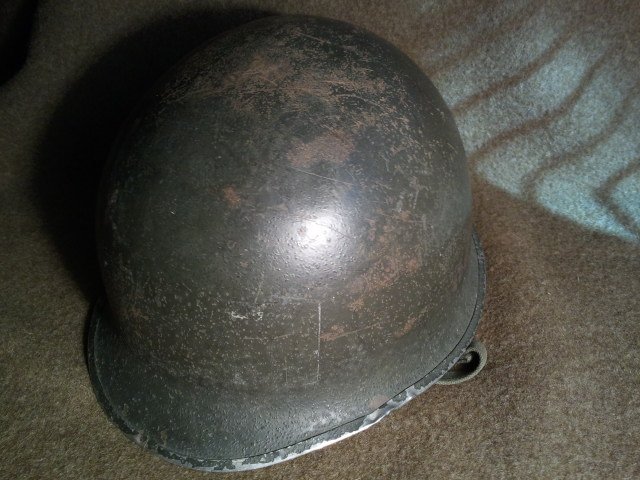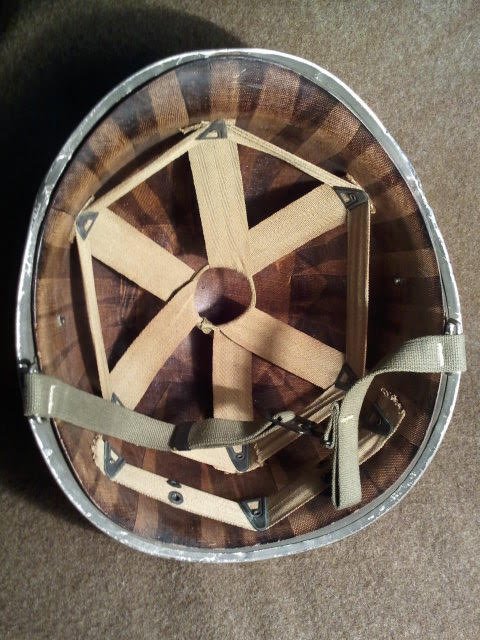Grab Your Canteen and Rifle Cartridge Belt!
Episode 3 of our collecting journey continues…
Having my M1 and a few hundred rounds of ammo drew me one step closer to becoming a collector, which still wasn’t a coherent thought.
The only thing on my militaria horizon was the need for a rifle cartridge belt to hold my M1 rounds.
A more organized system for seeking out militaria had not yet been born: a system where the best sources are known, where the best and worst prices are found, who the most reliable sources are for true vintage military artifacts, and a way to keep track of purchases, and not least, having a vision of what area of collecting to focus on.
I was purely a layman, flailing around, not even sophisticated enough to know that reproductions were widely produced and sold. Even so, I was to learn that even with experience, it is very easy to mistake fake for real, even when you’re on the lookout for the fakes.
Will the REAL Rifle Cartridge Belt Please Raise Its Hand?
So, two weeks after buying the M1, I hopped onto Google, looking for a cartridge belt. Search engines were, and still are, essential. I’m still finding sites I’ve never noticed before. I found this M-1923 cartridge belt on a reputable site.

The M-1923 was the only standard issue rifle cartridge belt used by the U.S. Army in WWII, in very sharp contrast to the WWI era which saw at least 20 variations. I’m not counting the BAR belt which is a completely different animal.
FACTOID | The M-1923 cartridge belt was developed as part of a series of improvements to U.S. military equipment after World War I. It was intended to replace the earlier M-1910 cartridge belt, which had been found lacking in various aspects.
The belt typically had ten pockets, each capable of holding two five-round stripper clips for the M1903 Springfield rifle or two eight-round en bloc clips for the M1 Garand rifle.
Today, the M-1923 cartridge belt is a popular item among military collectors and reenactors due to its historical significance and role in one of the most critical conflicts of the 20th century.
The belt above is the first piece of equipment in my militaria collection. It’s a late-war version as evidenced by the OD7, dark green color. Notice the charger retaining strap with a snap on the open pocket.
There was one slight variation in the Army’s M-1923, which was confined to the color. My OD7 belt, lacking a legible date, led me to acquire one with a date and in the OD3.

Like the green belt, this one also has the charger retaining straps. It has a 1942 date stamped on it. The M-1923 belts without the charger retaining straps were made post-war and during the Korean War. That’s all you need to know to determine if it’s war-time or post-war. That means that any advertisement images for these belts need to show the pocket open, which many sellers fail to show.
The “Steel Pot” – the M1 Helmet
While searching for the belt, I couldn’t resist an M1 helmet with liner, a clicker, a musset bag, and a canteen found on another site. The clicker is what paratroopers who dropped into Normandy on D-Day used to identify each other.
The M1 helmet was developed in 1940 to replace the old M1917 ‘Doughboy” helmet used in World War 1. The M1917 was considered inadequate for modern warfare.
This helmet was standard issue for all branches of the U.S. military, including the Army, Navy, Marine Corps, and Army Air Forces. It became a symbol of the American soldier during World War II.
While the helmet, helmet liner, and canteen that I purchased are real, I wasn’t sophisticated enough at the time to know that the clicker and musette bag were reproductions.


GI-Issued Canteens
The canteen that I purchased was the M-1942 CRS (corrosion-resistant steel), as opposed to variations of M-1910 aluminum canteens.
The M-1910 aluminum canteen had some limitations in durability and suitability for combat conditions and was slowly replaced by the newer M-1942 model.
The standard capacity was one quart (32 ounces), deemed sufficient for a soldier’s hydration needs in various combat situations.
I was not aware at the time that the enamel-coated canteens were produced in two different colors. Nor did I know that there was a plastic version, or that some aluminum ones had vertical seams, some horizontal seams, and some no seams, and that there were several different types of caps.
I knew nothing about any such variations. I was too busy basking in the knowledge that, “Okay! I’ve got the canteen!”

At this point, I viewed these acquisitions as incidentals, not the beginning of a collection. Although I didn’t realize it, I was already exhibiting the obsession that makes a collector a collector, and which carries into today. “Just one more thing.”
When you acquire one item, it’s bound to have a connection to another. Either vertically or laterally. My newborn obsession started out going a little vertical, adding different accessories. Going lateral is seeking items similar to ones already owned, but that are variations of it.
My next purchase would see me go lateral, in a big way. It was just going to be that one more thing.







2 Comments